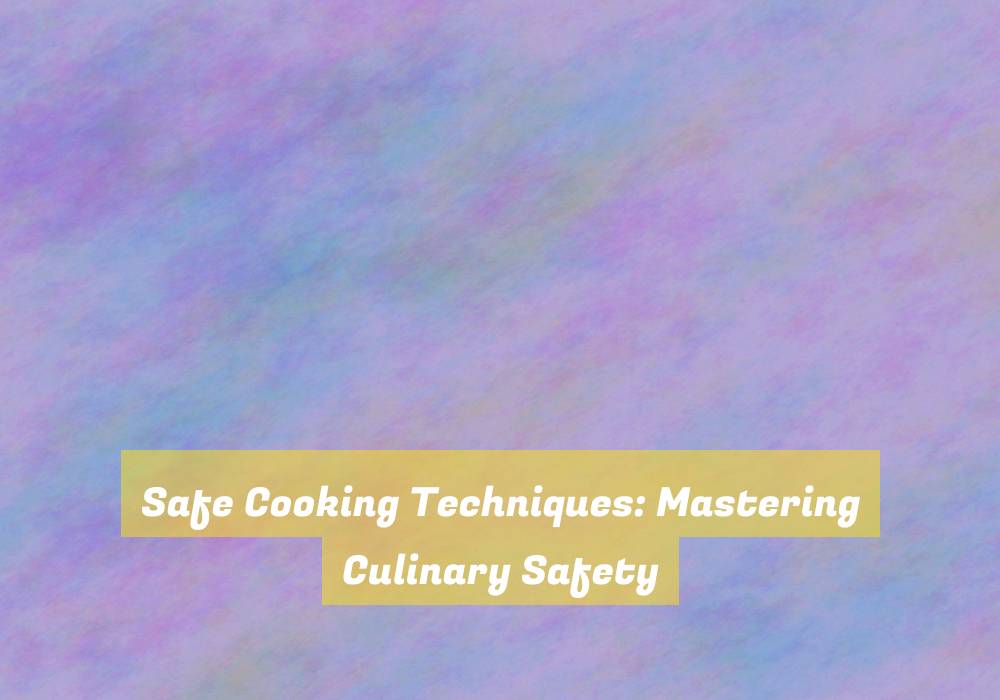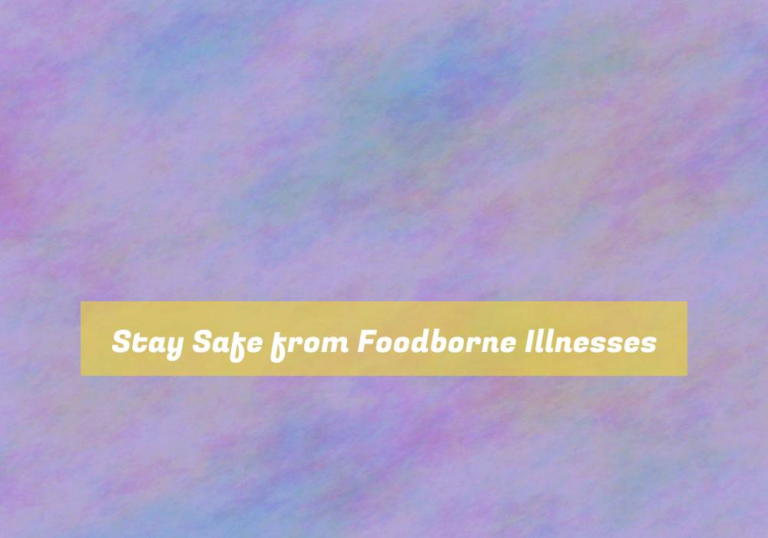Safe Cooking Techniques: Mastering Culinary Safety
You might think that safe cooking techniques are just common sense, but mastering culinary safety goes beyond simple precautions. Whether youG??re a novice or a seasoned cook, there are always new insights and best practices to discover in the kitchen.
From proper food handling to fire safety, the world of culinary safety is vast and ever-evolving. So, how can you ensure that youG??re taking the right steps to protect yourself and your loved ones in the kitchen?
Importance of Safe Cooking Techniques
To ensure the safety of yourself and others in the kitchen, itG??s crucial to prioritize safe cooking techniques. By following proper cooking methods, you can prevent accidents and injuries that may occur during food preparation.
- Always use oven mitts or pot holders when handling hot pots and pans to avoid burns.
- Additionally, be mindful of the placement of handles on pots and pans to prevent accidental spills or knocks.
- ItG??s important to keep a close eye on food while itG??s cooking to avoid overcooking, burning, or causing a fire.
- When using knives, maintain a firm grip and position your fingers away from the blade to reduce the risk of cuts.
- Never leave cooking food unattended, especially when using high heat or oil.
- ItG??s also essential to keep the kitchen clean and free of clutter to avoid tripping or slipping hazards.
Proper Food Handling Practices
Prioritize the safety of yourself and others in the kitchen by implementing proper food handling practices to prevent accidents and injuries during food preparation.
Start by washing your hands thoroughly with soap and warm water before and after handling food to eliminate any potential for cross-contamination.
Use separate cutting boards for raw meats and produce to avoid spreading harmful bacteria.
When marinating meats, do so in the refrigerator rather than at room temperature to inhibit bacterial growth.
Ensure that perishable foods are stored at the appropriate temperature to prevent spoilage and foodborne illnesses.
Additionally, use a food thermometer to accurately gauge the internal temperature of meats, poultry, and seafood to ensure theyG??re cooked to a safe temperature and kill any harmful bacteria.
When reheating leftovers, make sure they reach an internal temperature of 165-?F to eliminate any potential bacteria.
Fire Safety in the Kitchen
Implementing fire safety measures in the kitchen is essential to prevent accidents and ensure a secure cooking environment. Always keep flammable items like kitchen towels, paper towels, and oven mitts away from the stovetop to avoid accidental fires. Additionally, regularly check that your smoke alarms are functioning correctly and have a fire extinguisher nearby in case of emergencies.
When cooking, use pot handles that are turned inward to prevent accidental spills or knocks. If a small grease fire occurs, immediately cover the pan with a lid and turn off the heat to smother the flames. Never use water to extinguish a grease fire as it can cause the flames to spread.
ItG??s crucial to keep an eye on anything youG??re cooking, especially when using high heat, and never leave the kitchen unattended when there are pots or pans on the stove.
Implementing Safe Cooking Practices
As you focus on safe cooking practices, remember to keep flammable items away from the stovetop and regularly check your smoke alarms for proper functioning.
Additionally, always use oven mitts or pot holders when handling hot cookware, and be mindful of steam when uncovering hot dishes to prevent burns.
ItG??s crucial to use cutting boards to protect your countertops and to prevent cross-contamination between different food items. Make sure to wash your hands thoroughly before and after handling raw meat, poultry, or seafood to avoid foodborne illnesses.
When using a knife, always cut away from yourself and others, and store knives in a knife block or on a magnetic strip to prevent accidental cuts.
Furthermore, itG??s important to keep kitchen appliances clean and well-maintained to prevent electrical hazards and food contamination.
Finally, always follow proper food storage guidelines to minimize the risk of food spoilage and foodborne illnesses.
Conclusion
In conclusion, mastering safe cooking techniques is essential for preventing foodborne illness, kitchen fires, and other potential hazards.
By following proper food handling practices and implementing fire safety measures, you can create a safe and enjoyable cooking environment.
Remember to always prioritize safety in the kitchen to protect yourself and others while preparing delicious meals.





